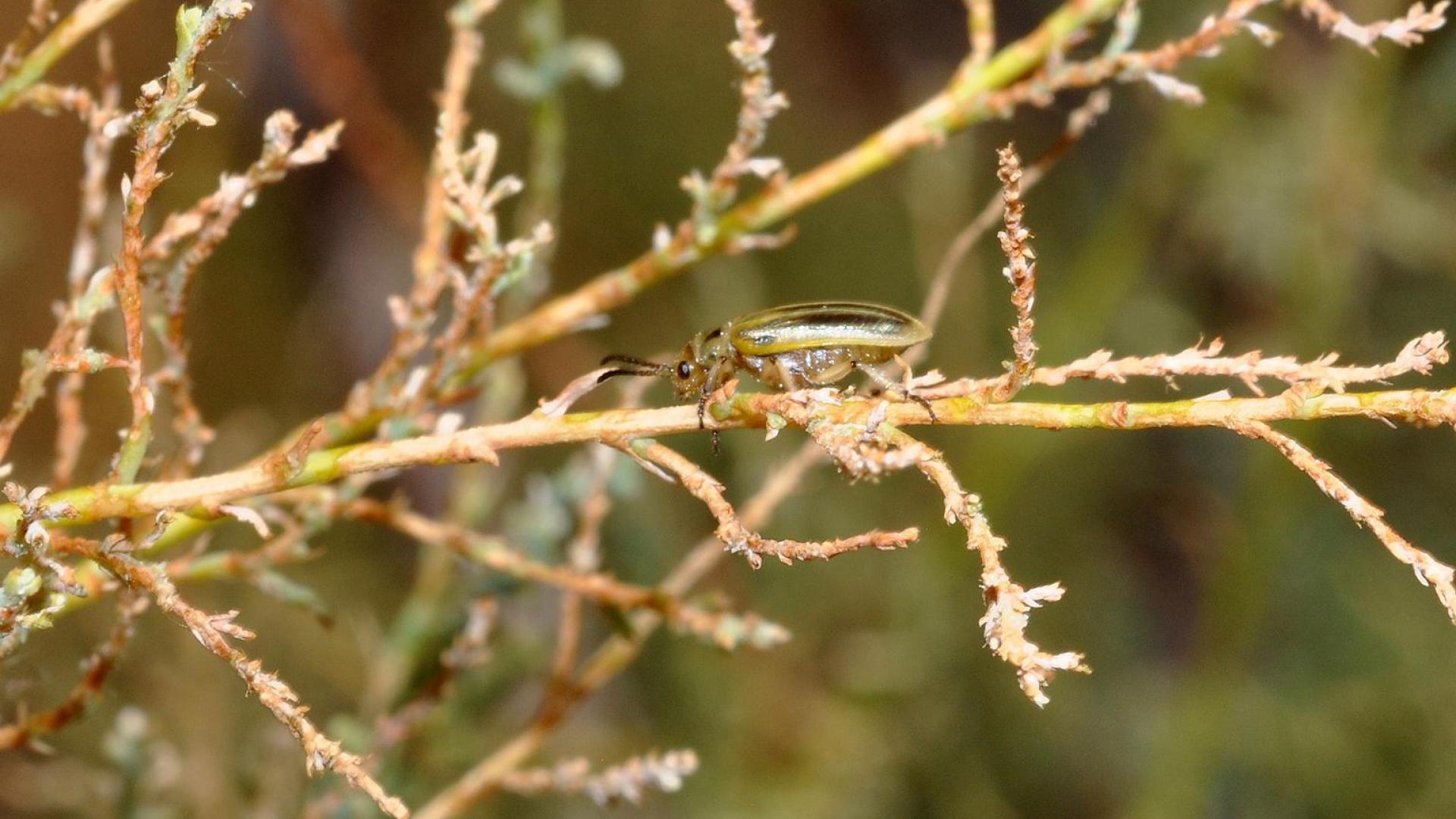
- Written by Anne Gondor and Austin Rutherford, University of ArizonaBody
Perhaps our first education about biological control came early with the nursery rhyme lines about the little old lady who swallowed organisms to catch the originally swallowed organism, (e.g. “the little old lady swallowed the spider to catch the fly and swallowed the bird to catch the spider and swallowed the cat to catch the bird”). The simple lesson from that nursery rhyme is that one seemingly simple biocontrol act may require successive unsustainable actions. Biological control for vegetation management relies on organisms to manifest mortality, reduce health and thus reproduction and density, or out compete the undesired plants. Organisms used for this purpose can range from other desired plants to animals, insects, fish or those that cause disease in the undesired vegetation, such as bacteria, parasitoids or fungi. The most easily implemented biological control strategy on rangelands uses grazing animals (see targeted grazing) such as sheep, goats, cattle and horses (EPA 2008), for targeted grazing on the invasive plant. Humans could be considered as a biological control agent on mesquite encroachment for example (see also cultural methods), by employing alternative uses of mesquite; seed pods ground into flour or used as fodder for cattle, lumber, slash used to fill gullies or other water control structures, fuelwood, biofuel and biochar (Ellsworth et al. 2018).
The use of biological control for woody plant encroachment is not typical, but there are some examples. Some success has been found by using mesquite seed eating insects such as bruchid beetles to control mesquite invasion in Australia and Argentina. Use of insects should be restricted if possible, to those native to the location and specialists on the target species to be controlled with rigorous testing done before introducing a non-native (Ellsworth et al. 2018). One of the most well-known introductions in the past decade was to control invasive Saltcedar. After rigorous testing and federal approval, the Tamarisk leaf beetle was successfully introduced into North America to control 1.5 million acres of Saltcedar (Tamarisk spp.) invaded and dominated riparian areas across thirteen states in the West (CATB 2012; Kauffman 2005). However, this biocontrol introduction has been so quickly successful at causing Saltcedar dieback that it has had subsequent consequences on the endangered Southwestern willow flycatcher that nests in riparian habitats. Use of such biocontrol measures require proactive monitoring and coordinated partnership restoration efforts to regain pre-invasion native vegetation to avoid a cascade of impacts on other species now relying on the invaded habitat.
There are three primary strategies or approaches for biocontrol: classical, augmentation, and conservation. Classical biocontrol is an intentional introduction of a non-native agent for long-term control of a target organism (or plant) without the need for supplemental agent releases. Taking an augmentative approach entails a single large release of the biocontrol agent, where the agent does not reproduce or remain in an ecosystem long-term. Lastly, conservation biocontrol does not involve releasing an agent or pest, but rather supporting naturally occurring enemies of the target organism either through providing additional resources, modifying an ecosystem, or protecting the natural enemy to enhance the control.
In the USA, any implementation of biocontrol that involves the release of a non-native agent should follow guidelines, permitting, and approvals as outlined by the US Department of Agriculture's Animal and Plant Health Inspection Service.
Related Resources
Videos
'Natural Enemies' book talk by Ann E. Hajek
Professor Ann Hajek discusses the wide diversity of organisms used in the control of pests, weeds and plant pathogens, and the strategies referred to as 'biological control.'
History, Release, and Spread of the Tamarisk Beetle
Ben Bloodworth, RiversEdge West's Tamarisk Beetle Program Coordinator, discusses the history, release, and spread of the tamarisk beetle.
Tools
- EDDMapS is a web-based mapping system for documenting invasive species and pest distribution. It is fast, easy to use, and doesn't require Geogra…
- iBiocontrol is a one stop shop for everything biocontrol and is a result of a large collaboration between Universities, EDDMapS and the US Forest Serv…
Featured Resources From the Database
- Journal Issue/Article
The Rangelands archives are made available by the Society for Range Management and the University of Arizona Libraries. Contact lbry…
Review article, no summary available.
Additional Links
- Idaho’s/BLM ISDA Biological Control Program
- Pacific Northwest Pest Management Handbooks. Biological Control Agents and Their Roles
- USDA APHIS Biological Control Program
- US Fish and Wildlife Service Biological Control Modules
- Collaborative Conservation and Adaptation Strategy Toolbox
Further Reading
- California Alliance for Tamarisk Biocontrol (CATB) Brochure. 2012.
- DiTomaso, Joseph M., Robert A. Masters, and Vanelle F. Peterson. 2010. "Rangeland Invasive Plant Management." Rangelands 32 (1): 43–47.
- Ellsworth, S. W., P. G. Crandall, J. M. Lingbeck, and C. A. O’Bryan. 2018. "Perspective on the Control of Invasive Mesquite Trees and Possible Alternative Uses." IForest - Biogeosciences and Forestry 11 (5): 577.
- EPA. 2008. Integrated Vegetation Management Fact Sheet.
- Kauffman, William. 2005. "Program for Biological Control of Saltcedar (Tamarix spp.) in Thirteen States." Environmental Assessment. June 2005. Fort Collins, CO: U.S. Department of Agriculture, Western Region.
- Quimby, P C, WL Bruckart, CJ Deloach, L Knutson, and MH Ralphs. 1991. “Biological Control of Rangeland Weeds.” In Noxious Range Weeds. Chapter 9., 83–102. Boulder, San Francisco & Oxford: Westview Press.